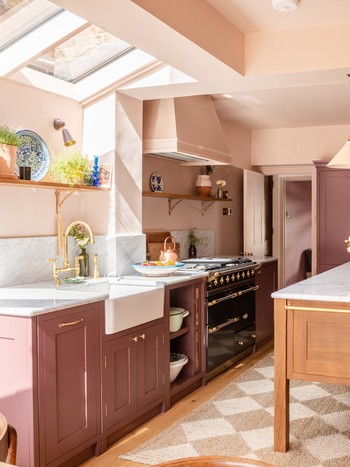Change Any Kind Of Kitchen Room with Stunning Legs For Kitchen Island Choices
Change Any Kind Of Kitchen Room with Stunning Legs For Kitchen Island Choices
Blog Article
An Overview to Choosing the Perfect Legs For Kitchen Area Island for Your Home
Choosing the suitable legs for your cooking area island is a nuanced choice that impacts both the capability and visual appeal of this central space. Factors such as height, products, and design play an important duty in integrating your island with the general cooking area design. Furthermore, understanding the value of stability and upkeep can considerably influence your selection. As you take into consideration these components, it becomes obvious that the ideal legs can change not only the appearance of your kitchen area yet additionally its functionality for many years ahead. What specific features should you prioritize in this option procedure?

Comprehending Cooking Area Island Legs
When choosing legs for a kitchen island, it's crucial to recognize their practical and visual roles in the total style. The legs work as a crucial assistance system, making certain security and durability for the island, which typically works as a workspace, eating location, or gathering place. Consequently, the selection of material and building technique must be durable enough to hold up against everyday use and possible wear.
Along with their structural responsibilities, legs contribute considerably to the island's aesthetic charm. They can improve the cooking area's design, whether with standard, contemporary, or diverse layouts. The height and proportion of the legs are likewise crucial considerations; they have to harmonize with the island's kitchen counter elevation while ensuring comfy seating for those utilizing the room.
In addition, the leg layout can affect the general circulation of the cooking area. Open, airy leg designs can produce a feeling of agility, while solid, considerable legs might convey a much more based and stable aesthetic - Legs For Kitchen Island. Understanding these functional and aesthetic aspects will certainly assist home owners in making informed options that match their kitchen area's style and enhance its use
Popular Styles and Materials
The option of legs for a kitchen island incorporates a range of popular styles and products, each offering one-of-a-kind characteristics that can enhance both functionality and aesthetic appeals. Traditional legs commonly show luxuriant details and workmanship, boosting classic kitchen styles.

Elevation and Security Considerations

Security is another important factor to consider. The legs of the kitchen island need to provide sufficient assistance, ensuring that the structure can endure day-to-day usage without shifting or wobbling. Material choice plays a substantial function in stability; steel legs, for example, have a tendency to use higher toughness contrasted to timber. In addition, making sure that the island is securely secured to the floor or wall surface can boost security, particularly for bigger islands that might birth considerable weight.
Matching Your Kitchen Visual
Picking the best legs for your kitchen island goes past functionality; it additionally plays a considerable duty in the total visual of the area (Legs For Kitchen Island). When selecting legs, think about the layout style of your kitchen.
Shade is an additional important aspect. Legs that complement or comparison click to find out more with your island's surface and surrounding cabinets can produce visual consistency or striking prime focus. Matching dark timber legs with a light marble countertop can include deepness and rate of interest. Additionally, consider the surface of the legs; matte, shiny, or textured coatings can substantially affect the general feeling of the kitchen area.
Installment and Maintenance Tips
Setting up kitchen island legs calls for careful attention to detail to guarantee both security and visual charm. Make use of a stud finder to locate wall surface studs if you are attaching the legs to a wall or utilizing braces for included support.
When safeguarding the legs, use high-grade screws and, if essential, wood glue for added toughness. For metal legs, make certain that you are utilizing suitable supports and tools to prevent damage to your floor covering. It is advisable to examine for levelness after setup, making changes as required to stay clear of tottering.
Upkeep is just as essential for longevity - Legs For Kitchen Island. Regularly examine the legs for any type of indicators of wear or loosening, especially in high-traffic locations. Tidy the legs with an appropriate cleaner, avoiding abrasive materials that might scratch the surface area. For wooden legs, consider using a wood conditioner occasionally to maintain their surface. By adhering to these setup and maintenance suggestions, you can ensure that your cooking area island legs continue to be both useful and visually visit the site enticing.
Verdict
In verdict, picking the proper legs for a kitchen area island necessitates cautious consideration of height, security, and visual compatibility. Inevitably, thoughtful leg choice plays a vital function in boosting both the usefulness and style of the kitchen space.
When choosing legs for a kitchen area island, it's crucial to recognize their aesthetic and practical roles in the overall style. Open, ventilated leg designs can produce a sense of lightness, while strong, substantial legs might communicate a much more grounded and steady visual. The legs of the kitchen area island ought to give Visit This Link adequate support, making sure that the structure can hold up against day-to-day usage without tottering or moving.Mounting kitchen island legs calls for careful interest to information to ensure both stability and aesthetic appeal.In conclusion, choosing the appropriate legs for a kitchen area island demands careful consideration of height, stability, and aesthetic compatibility.
Report this page